The day began early with a knock on the door of a shepherd’s hut. A groggy shepherd appeared, surprised to find visitors at this hour with an unusual question: could we rent two horses for the day? The negotiations were straightforward, and minutes later, I was in a saddle for the first time in my life. Nervous and uncomfortable around horses, I was relieved when Ruslan, a local scientist and avid horseman, hopped into the saddle behind me and took the reins. Meanwhile, Martina, the third member of our team, shared another horse with the shepherd, who agreed to guide us to the foot of the Grigoriev Ice Cap.
With our gear strapped to the horses, we were ready to go – or so we thought. We had arranged to meet two scientists from the Tien Shan Research Centre, but they were nowhere to be seen. After waiting for a while, we decided to proceed without them. Just as we crossed the main river, our driver radioed to inform us he could see the researchers arriving in the distance. To save time, we split up: Martina, the shepherd, and I continued toward the glacier, while Ruslan rode back with the horse to meet the scientists, help them cross the river and carry their gear.
With Ruslan gone, I had to continue on foot through the marshy pastures while Martina and the shepherd rode ahead. An hour later, Ruslan caught up, bringing the horse for me to ride. As we were approaching the ice cap, the smooth pastures gave way to a chaotic maze of boulders and morainic debris, remnants of the retreating glacier. Ruslan handed me the reins, and at first, I struggled to steer the horse through this uneven terrain. Then I told myself it was like guiding a paraglider – an analogy that made it feel more intuitive and even enjoyable.
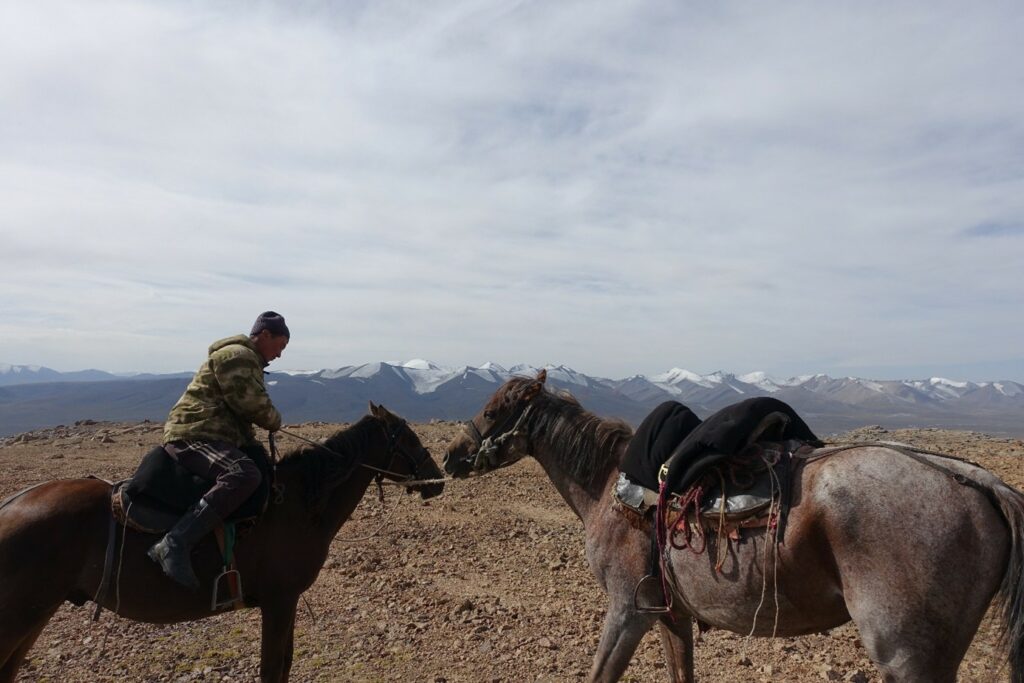
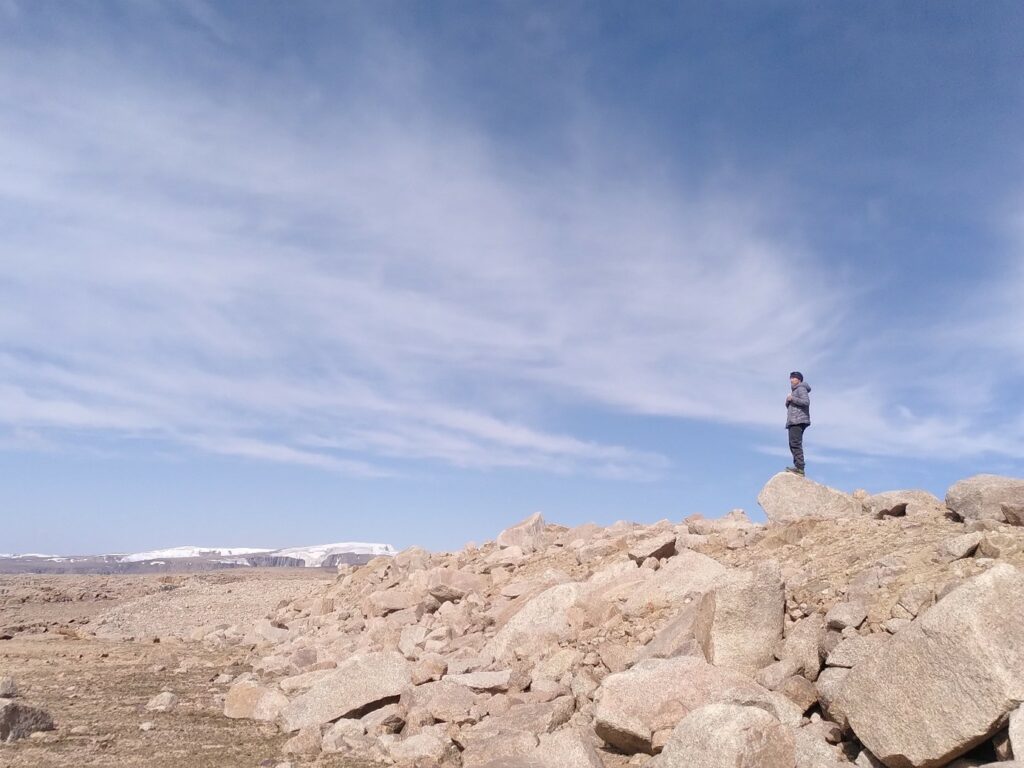
Upon reaching the last moraine separating us from the ice cap, we unloaded our gear. The shepherd took the horses back down, leaving us in a stark, lunar-like landscape to wait for the two researchers from the Tien Shan Research Centre. Time ticked by, and when they finally arrived, we redistributed the gear among the team and began the ascent toward the station at 4,600 m a.s.l. With heavy backpacks and a few days of intense fieldwork behind us, we swiftly progressed towards our goal: installing the AstroNode module.
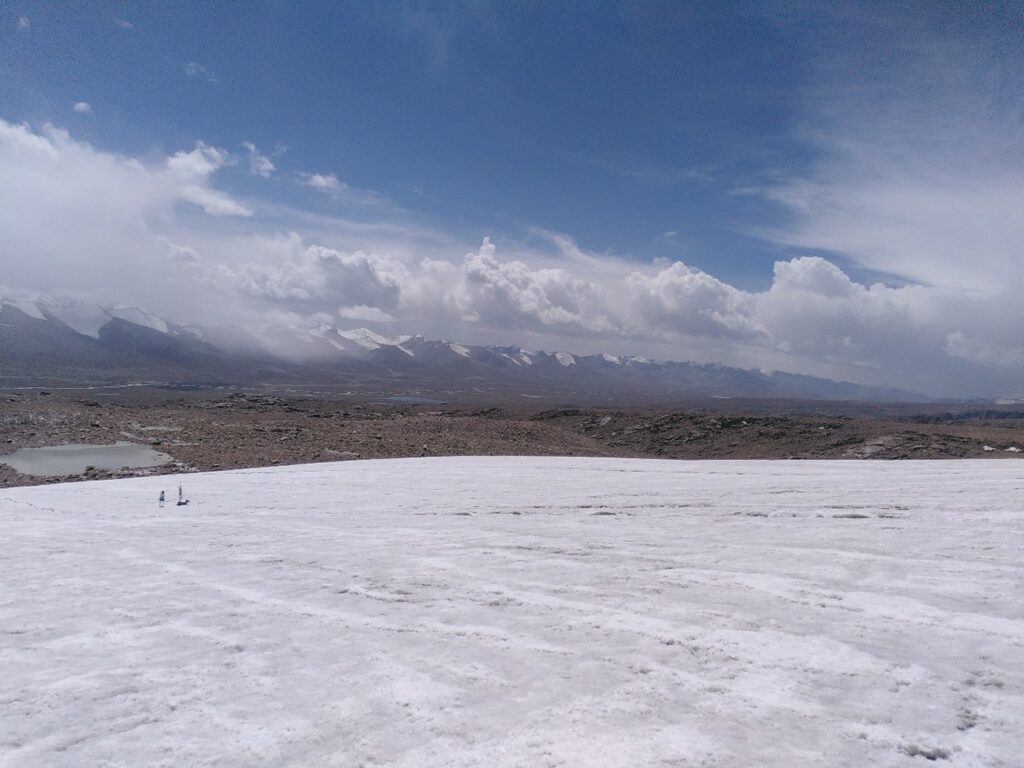
But the accumulation zone proved more challenging than anticipated. The firn was already soft and thawing, causing us to sink with every step. Strapping on snowshoes helped us move faster, but the darkening sky was catching up with us. Just 500 metres from the station, we made the difficult decision to turn back. The deteriorating conditions were too dangerous to ignore.
Descending the glacier, we were caught in a storm. Fierce winds and snow forced us to huddle together, bracing against the icy blasts. When the storm finally passed, we resumed our descent, weary but grateful to be heading back to safety.
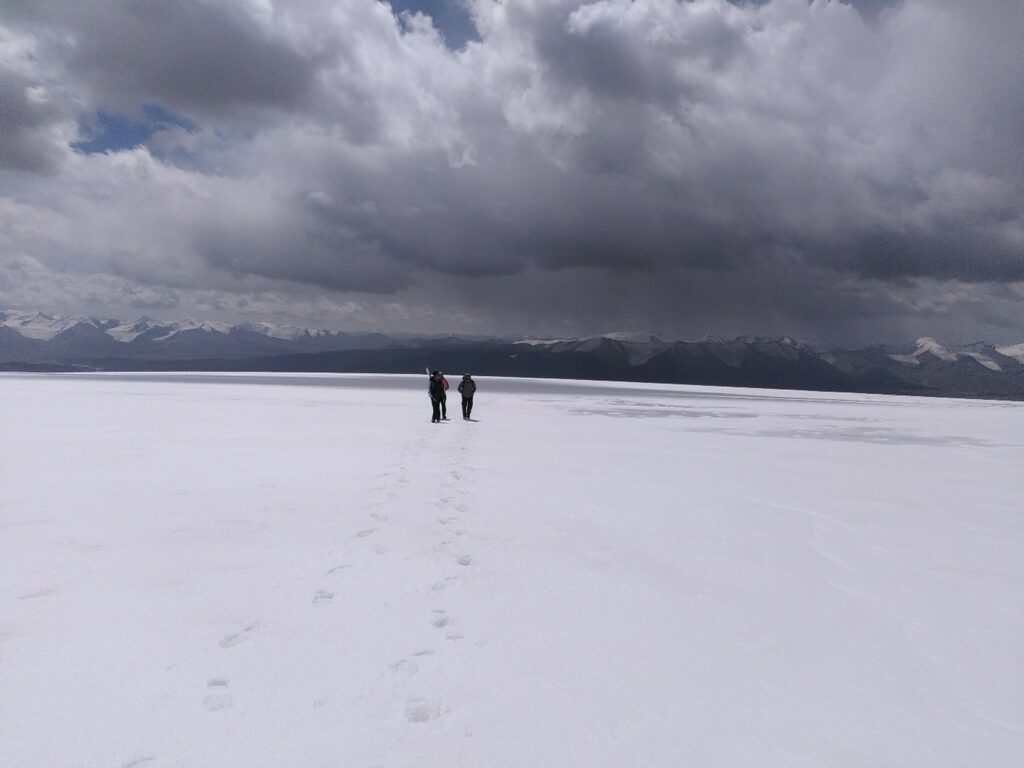
As we reached the pastures again, we encountered another shepherd who greeted us warmly and invited us into his yurt for ‘chai’. Inside, we drank ‘chai’, ate traditional bread, and shared stories about life and the changing landscape. Before we left, the shepherd kindly offered us to borrow his horse for the final river crossing, which would have been impossible otherwise.
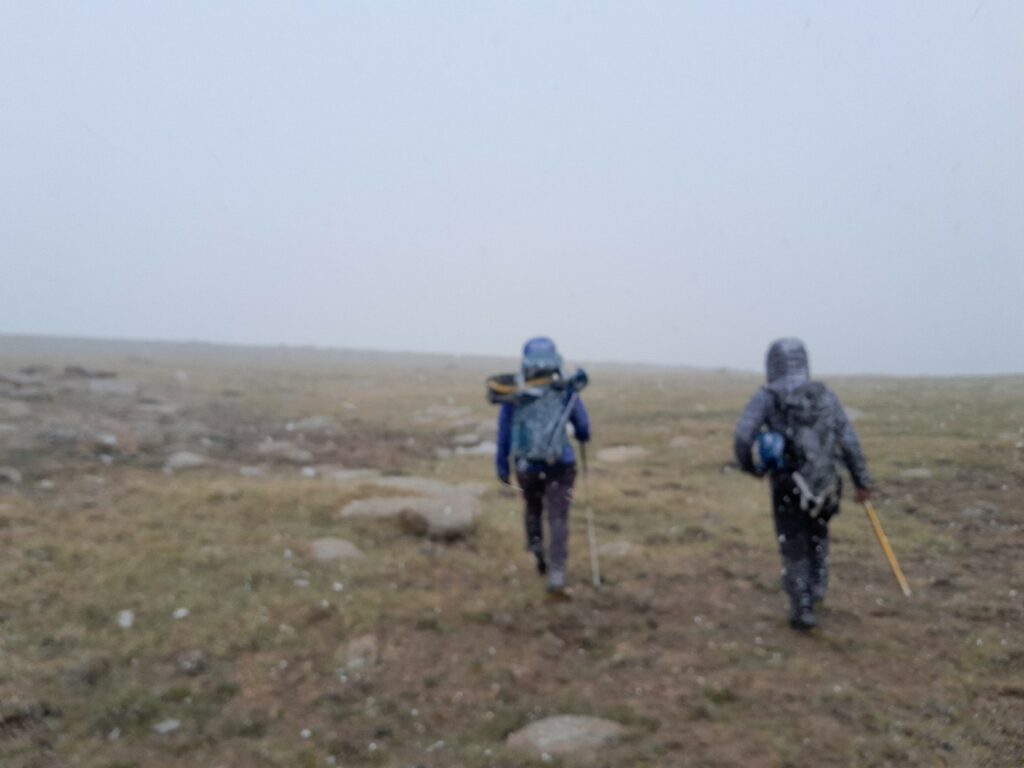
The last leg of the journey was an unforgettable ride back to Tamga in a creaky Soviet-era car. The vehicle groaned with every bump in the road, and at one point, we even lost a piece of the car behind us. But somehow, it kept going. By the time we made it back safely, we were exhausted but deeply fulfilled – a day that tested our resilience, brought unexpected connections, and reminded us of the raw beauty and unpredictability of fieldwork in the Tien Shan.
The mission was finally completed by our Central Asian colleagues who returned on a similarly difficult expedition one month later. It is so good to have such reliable and amazing colleagues in Kyrgyzstan!
Martina Barandun is a Senior Researcher and Julie Wee is a PhD student at the Department of Geosciences at the University of Fribourg, Switzerland. Their field trip took place in summer 2024 with financial support from an SPI Technogrant.
Header image: © 2024 Martina Barandun, Julie Wee, all rights reserved